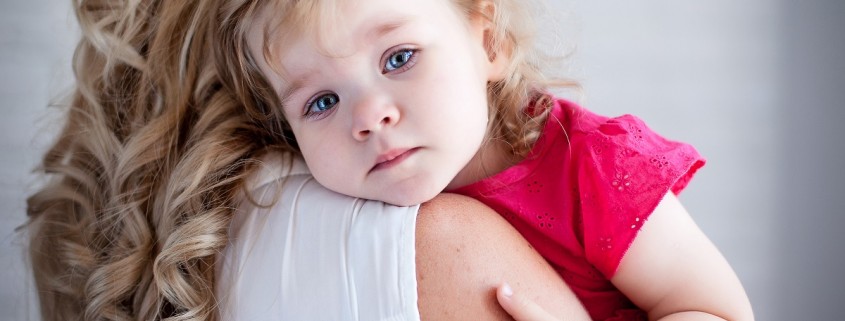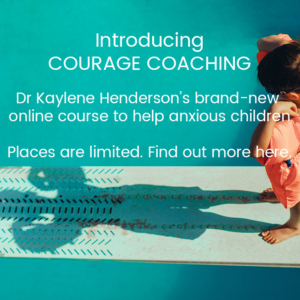Separation Anxiety Disorder in Childhood
Separation Anxiety in Children
It’s normal for young children to not want to stray too far from us. We are animals after all and survival instincts tell our young that too much distance or time between them and us is a risky thing. For this reason, the developmentally normal ‘stranger anxiety’ and ‘separation anxiety’ that infants and young children experience is thought to be hard-wired. That said, the intensity of this ‘normal anxiety’ differs depending on the child’s temperament and on how responsive her caregivers have been to the child’s need for comfort and closeness.
Separation Anxiety Disorder
Separation Anxiety Disorder is different. It often occurs later, causes more upset and impacts upon the child’s functioning. The anxiety is simply too much, so that instead of serving to protect the child, it distresses and impairs and is therefore considered a disorder.
According to the DSMIV (one of the diagnostic classification systems used by Psychiatrists), Separation Anxiety Disorder is defined as developmentally inappropriate and excessive anxiety concerning separation from home or from main caregivers, with 3 or more of this list occurring:
- recurrent excessive distress when separation from home or main caregivers is anticipated
- persistent and excessive worry about losing, or about possible harm coming to, main caregivers
- persistent and excessive worry that an untoward event will lead to separation from a main caregiver (eg getting lost or being kidnapped)
- persistent reluctance or refusal to go to school or elsewhere because of these separation fears
- persistently and excessively fearful or reluctant to be alone or without major caregivers at home or in other settings
- persistent reluctance or refusal to go to sleep without being near a main caregiver or to sleep away from home
- repeated nightmares involving separation themes
- repeated complaints of physical symptoms such as headaches, stomach aches, nausea, vomiting etc when separation from a main caregiver occurs or is anticipated
These symptoms need to last for at least 4 weeks in a child or young adolescent and cause significant distress and impairment of functioning to be considered a disorder.
Separation anxiety disorder is common, occurring in approximately 4% of children, affecting boys and girls equally. While it can have its onset earlier, it seems to be most common in 7-8-year-olds.
Why are some kids affected by Separation Anxiety Disorder?
Like most mental health issues, the causes are many and varied and often it’s the combination of several of these factors that’s responsible. Genetic vulnerability to anxiety, shy inhibited temperament, a recent death in the family, parental separation/divorce, or illness in either parent or child are all factors which might contribute. Children are also very good at picking up on their parent’s cues. As a result, sometimes a child perceives (rightly or wrongly) that her parent needs her to stay close. This might be due to her parent’s own anxiety, due to the parent’s desire for the child’s company or assistance, or due to a parent’s ‘need to be needed’.
Just as the causes vary, so too does the presentation of separation anxiety disorder. School refusal, reluctance to go to school camps or friend’s houses without a parent, nightmares, insisting on sharing their parent’s bed or following Mum or Dad around the house are all examples of how Separation Anxiety Disorder might present. Some children will become tearful when separated from their parent, others will tantrum, become distracted, nervous or aggressive. Parents can often feel frustrated and burnt out. It can feel hard to get the balance right between providing comfort and closeness while also encouraging bravery, independence and a sense of competence.
So what’s next? The good news is that treatment for Separation Anxiety Disorder is readily available. As with most mental health issues, the earlier that intervention is sought, the quicker recovery is likely to occur. In the first instance, seek an assessment from your child’s Family Doctor who can then refer your child to a Child Psychiatrist or Psychologist, depending on your child’s needs. Treatment will then depend on the age of your child and the severity of their symptoms. Education about anxiety and its contributors, relaxation strategies, cognitive behavioural therapy, liaison with school teachers / guidance officers are all considered useful treatment strategies. It’s important to make sure everyone in your family and treating team have the same goals in assisting your child overcome the anxiety. In some severe or prolonged cases, medication (often using a Selective Serotonin Reuptake Inhibitor ‘SSRI’) in addition to the previously mentioned treatment approaches can also be useful.
*For simplicity, children are referred to using feminine pronouns (‘she’/‘her’) in this article, although the information equally applies to boys.
Dr Kaylene Henderson is passionate about sharing practical, research based advice to help you feel more calm and confident while raising kind, resilient and socially and emotionally healthy children.
And here for the corresponding course series for early childhood professionals, Raising Good Kids: Managing Behaviour and Emotions in Early Childhood Care and Education Settings.
References:
American Psychiatric Association. DSM-IV-TR: Diagnostic and Statistical Manual of Mental Disorders, Text Revision. American Psychiatric Press; 2000
Kaplan BJ, Kaplan VA. Kaplan and Sadock’s Synopsis of Psychiatry: Behavioral Sciences/Clinical Psychiatry. 9th ed. Philadelphia, Pa: Lippincott Williams & Wilkins; 2003




